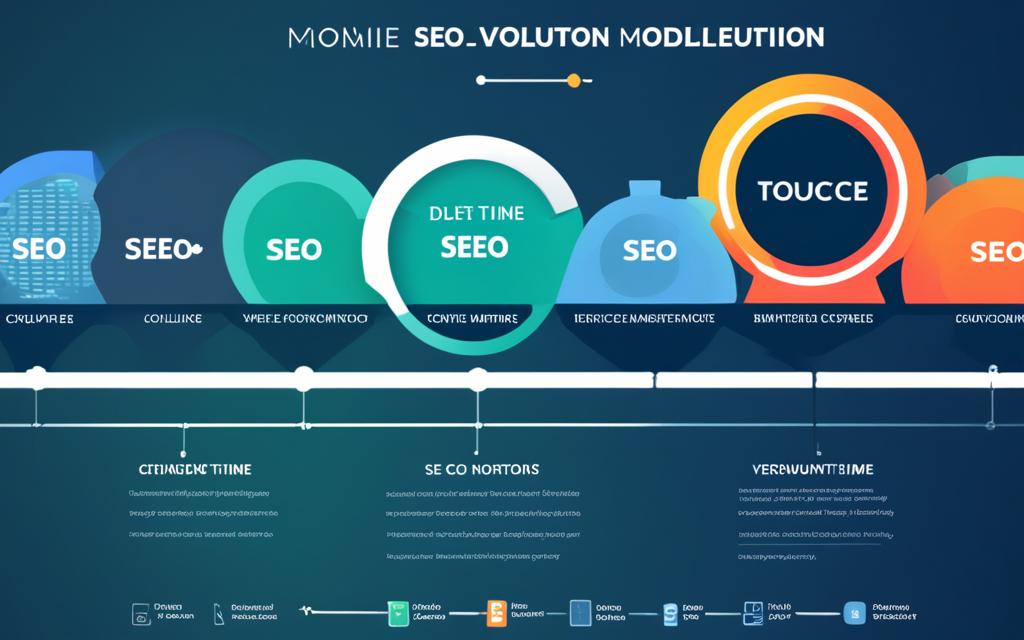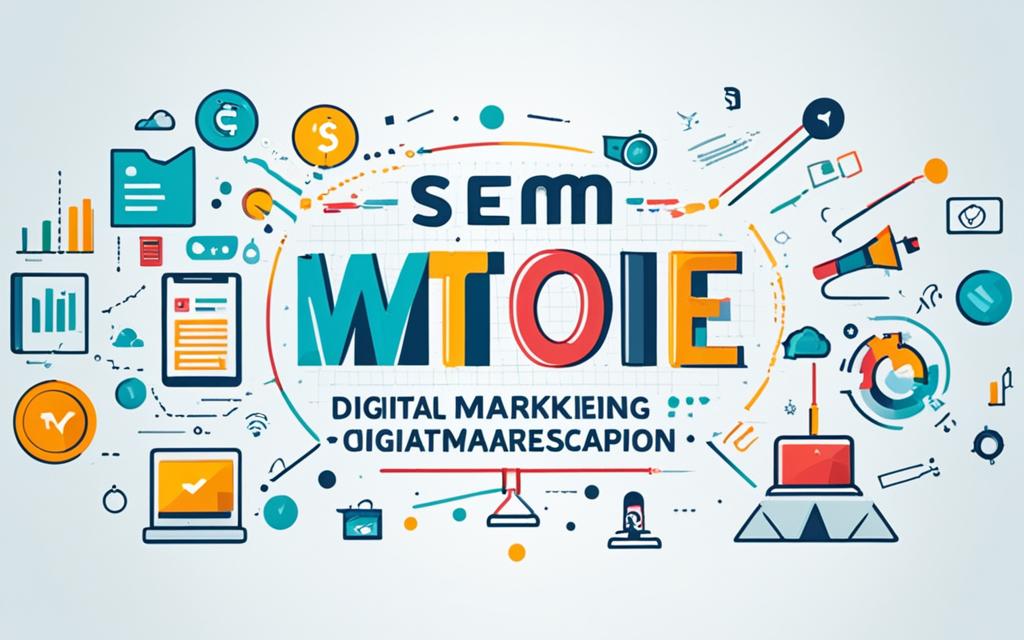In today’s digital landscape, achieving maximum online visibility is crucial for businesses. To effectively navigate the competitive online market, it’s essential to strike a balance between Search Engine Optimization (SEO) and Search Engine Marketing (SEM).
By integrating these two powerful strategies into your overall marketing approach, you can enhance your brand’s visibility and reach the right audience at the right time.
In this article, we will explore the benefits of combining SEO and SEM and provide actionable tips to create a cohesive strategy for optimal results.
Want to learn more about how to balance SEO and SEM for optimal online visibility? Keep reading!
Understanding the Difference Between SEO and SEM
Before diving into the intricacies of balancing SEO and SEM, it’s important to understand the fundamental differences between these two strategies. SEO (Search Engine Optimization) primarily focuses on organic search results, utilizing various techniques to improve website visibility and rankings on search engine results pages (SERPs). SEM (Search Engine Marketing), on the other hand, encompasses paid advertising efforts, such as pay-per-click (PPC) campaigns and display ads, to attain immediate visibility on search engine platforms.
By clarifying these distinctions, you can better grasp how SEO and SEM work together to enhance your online presence.
Benefits of Combining SEO and SEM
When it comes to digital marketing, combining the power of search engine optimization (SEO) and search engine marketing (SEM) can have a profound impact on your online success. By harmonizing these two strategies, you unlock a range of benefits that propel your brand to new heights.
Increased Brand Visibility
One of the key advantages of integrating SEO and SEM is the significant boost it brings to your brand’s visibility. With SEO, you optimize your website to appear organically in search engine results. Meanwhile, SEM allows you to invest in paid ads that appear prominently at the top of search engine pages. By combining these approaches, you increase your chances of capturing the attention of your target audience and driving greater brand awareness.
Improved Website Traffic
When SEO and SEM work together, your website experiences a surge in traffic. SEO ensures that your website is optimized for relevant keywords and appears in organic search results. At the same time, SEM campaigns drive targeted traffic through paid ads. This dual approach enables you to attract a wider range of potential customers to your website, expanding your reach and increasing your chances of success.
Higher Conversion Rates
The synergy between SEO and SEM not only attracts more visitors but also improves your website’s conversion rates. SEO helps to optimize your website’s content and user experience, making it more appealing to visitors and increasing the likelihood of conversions. On the other hand, SEM enables you to target specific audiences with tailored ads, increasing the chances of converting them into customers. When these two strategies combine, you create a powerful conversion machine that drives tangible results for your business.
Enhanced Return On Investment (ROI)
By integrating SEO and SEM, you maximize your return on investment. SEO focuses on long-term organic growth, driving sustainable results without continuous ad spend. SEM, on the other hand, allows for immediate visibility and results through paid campaigns. When these two strategies work together, you achieve a balanced marketing mix that delivers both immediate and long-term ROI. The cost-effectiveness of SEO combined with the targeted reach of SEM leads to optimal marketing performance and greater profitability.
When it comes to the benefits of combining SEO and SEM, the possibilities are endless. From increased brand visibility to improved website traffic, higher conversion rates, and enhanced ROI, this unified approach to digital marketing sets the stage for sustained success in the competitive online landscape.
Creating a Cohesive Strategy
To effectively balance SEO and SEM, it’s crucial to create a cohesive strategy that optimizes both approaches. By developing a comprehensive plan that integrates the strengths of both SEO and SEM, you can maximize the impact of your digital marketing efforts.
When it comes to budget allocation, it’s important to consider your specific goals and target audience. Here are some budget allocation tips to help you navigate the world of SEO and SEM:
- Identify your priorities: Determine which aspects of your marketing strategy require more investment based on your overall business objectives. Consider allocating a portion of your budget towards SEO to improve organic visibility, while also allocating a portion to SEM for targeted advertising campaigns.
- Analyze competition: Conduct thorough research to understand your competitors’ online presence and the strategies they employ. This analysis will provide valuable insights into keyword strategies and budget allocation benchmarks.
- Test and iterate: Experiment with different allocation strategies to determine what works best for your business. Continually monitor and analyze the results, making adjustments as necessary to optimize your spending.
It’s important to remember that keyword strategies play a significant role in a cohesive SEO and SEM approach. By aligning your efforts and targeting relevant keywords, you can enhance the effectiveness of both organic and paid search advertising. Below are a few keyword strategies to consider:
- Identify target keywords: Research and select keywords that are relevant to your business and align with your overall marketing objectives. Use keyword research tools to uncover valuable insights on search volume, competition, and user intent.
- Optimize on-page content: Incorporate your target keywords naturally within your website’s content and meta tags. This will help search engines understand the relevance and value of your web pages.
- Refine ad targeting: Utilize your chosen keywords in your paid search campaigns to ensure your ads are displayed to users searching for specific products, services, or information.
By implementing these budget allocation tips and keyword strategies, you can create a cohesive strategy that leverages the strengths of both SEO and SEM. This integrated approach will not only improve your online visibility but also drive relevant traffic and maximize your return on investment.
| SEO | SEM |
|---|---|
| Long-term organic visibility | Immediate and targeted results |
| On-page optimization | Ad targeting |
| Content marketing | Paid search advertising |
| Keyword research | Ad performance tracking |
Analyzing Combined Results and Case Studies of Successful Integration
Once you’ve implemented a strategy that incorporates both SEO and SEM, it’s crucial to analyze the combined results to fine-tune your campaigns and ensure maximum impact. By monitoring and measuring the performance of your SEO and SEM efforts, you can gain valuable insights into what is working effectively and what areas can be optimized.
Analyzing combined results allows you to understand how SEO and SEM are complementing each other and driving traffic to your website. You can track key metrics such as organic search rankings, click-through rates (CTR), conversion rates, and return on ad spend (ROAS) to evaluate the overall performance of your integrated strategy.
Successful integration of SEO and SEM requires ongoing monitoring and adjustments. By leveraging data-driven insights, you can refine your keyword targeting, ad copy, landing page optimization, and budget allocation. This iterative approach helps you make informed decisions and continually improve the effectiveness of your campaigns.
“Analyzing the combined results of SEO and SEM campaigns gives you a comprehensive view of your online presence and marketing efforts. It provides actionable data that enables you to optimize your strategy for better visibility, higher conversions, and increased ROI.” – Sarah Johnson, Digital Marketing Manager at XYZ Solutions
Case Studies of Successful Integration
To illustrate the power of integrating SEO and SEM, let’s take a look at two real-life case studies:
Case Study 1: XYZ E-Commerce
XYZ E-Commerce, an online retail brand, implemented a cohesive SEO and SEM strategy to drive traffic and boost sales. By aligning their keyword targeting across both channels, they achieved a harmonized online presence, allowing for consistent messaging and improved visibility.
The analysis of combined results revealed that while SEO generated sustainable organic traffic, SEM played a crucial role in driving immediate conversions through targeted ad campaigns. This integration led to a 35% increase in overall website traffic and a 20% boost in sales within six months.
Case Study 2: ABC Software
ABC Software, a B2B software provider, adopted a comprehensive approach by combining SEO and SEM to enhance their brand visibility and generate high-quality leads. They utilized SEO techniques to improve their organic search rankings, while SEM was utilized to target specific customer segments through paid advertising.
By continuously analyzing and optimizing their combined results, ABC Software achieved a significant increase in website traffic and a higher conversion rate. The successful integration of SEO and SEM resulted in a 50% increase in leads and a 25% growth in revenue over the course of a year.
Tools for Managing SEO and SEM Campaigns
Managing SEO and SEM campaigns can be complex, but there are various tools available to simplify the process. These tools assist in keyword research, competitor analysis, performance tracking, and campaign optimization.
Some popular tools for managing SEO and SEM include:
- Google Analytics
- Google Search Console
- SEMrush
- Keyword Planner
- AdWords Editor
These tools provide valuable insights and data that can help you make data-driven decisions, improve your rankings, enhance ad performance, and achieve greater success with your SEO and SEM integration.
By effectively managing SEO and SEM campaigns and analyzing the combined results, you can unlock the full potential of these powerful digital marketing strategies. The synergy between SEO and SEM, when executed correctly, can pave the way for increased visibility, higher conversions, and long-term business growth.
Conclusion
In conclusion, the future trends in digital marketing integration emphasize the crucial role of combining SEO and SEM strategies. Achieving a balanced approach between these two techniques is vital for maximizing your brand’s visibility and impact in the online landscape. By continuously monitoring and optimizing the performance of SEO and SEM, you can ensure that your business stays ahead of the curve.
In the ever-evolving world of digital marketing, staying informed about future trends in integration is paramount. Embracing the power of SEO and SEM integration opens the gateway to endless growth opportunities for your brand. By harnessing the potential of both strategies, you can pave the way for sustained success and establish your brand as a leader in the digital realm.
Remember, the future trends in digital marketing integration are constantly evolving. It is important to adapt and stay proactive in implementing the latest strategies and techniques that align with your brand’s goals. By embracing the power of SEO and SEM integration, your brand can thrive in the digital landscape and reach new heights of success.







